12 start with R start with R
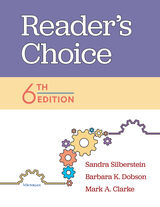
In this new edition, Reader's Choice continues its legacy of teaching skills for academic success. The new edition of the classic textbook teaches readers that the most important skill is selecting the best reading strategies for solving everyday reading challenges. The exercises and readings in Reader's Choice help students become independent, efficient readers.
Reader’s Choice provides 9 units that teach progressively more complex reading strategies. These units are accompanied by skills-focused activities as well as full reading passages. Units include readings and materials from respected news sites, commonly used items like transit maps, excerpts from well-known literary works such as Shirley Jackson’s “The Lottery,” and much more. Together, these readings provide engaging, real world examples that allow students to strengthen the reading skills vital to academic and career success.
In Reader’s Choice, 6th Edition, students will:
Reader’s Choice, 6th Edition is accompanied by a companion website featuring student resources and by a set of teaching materials supporting classroom use.
CEFR Levels: B1, B2, C1, C2
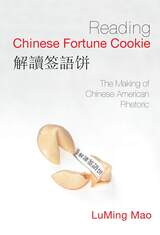
LuMing Mao offers an important discussion of the rhetoric of Chinese American speakers, which has wide implications for the teaching of writing in English and for our understanding of cross-cultural influences in discourse.
Recent scholarship tends to explain such influences as contributing to language hybridity---an advance over the traditional "deficit model." But Mao suggests that the "hybridity" approach is perhaps too arid or sanitized, missing rich nuances of mutual exchange, resistance, or even subversion. Working from Ang's concept of "togetherness in difference," Mao suggests that speakers of hybrid discourse may not be attempting the standard (and failing), but instead may be deliberately importing cultural material to create a distance between themselves and the standard. This practice, over time, becomes a process that transforms English, enriching and enlarging it through the infusion of non-Western discourse features, subverting power structures, and even providing unique humorous touches.
Of interest to scholars in composition, cultural studies, and linguistics as well, Reading Chinese Fortune Cookie leads in an important new direction for both our understanding and our teaching of English.
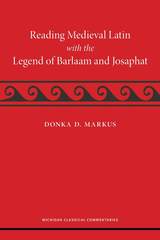
In Reading Medieval Latin with the Legend of Barlaam and Josaphat, Donka D. Markus offers comprehensive commentary on the 13th-century Dominican theologian Jacobus de Voragine’s retelling of the ancient story of the life of the Buddha that will resonate with contemporary students of Latin.
Jacobus’s version of the legend serves as a compelling, original Latin text. Vividly conveyed through parables, fables, and anecdotes, it naturally lends itself to a critical consideration of ethical principles and philosophical truths commonly shared across many cultures. With its rich stylistic devices and authentic classical Latin word order, it provides superb training for reading rhetorical prose before advancing to the works of more complex classical prose authors. At the same time, the text offers a unique opportunity for systematically learning the special features of Late and Medieval Latin. Included in this volume are two presentations of Jacobus’s text: one maintaining the original orthography reflecting Latin as it appears in medieval manuscripts, and one in which the orthography follows Classical Latin norms.
This textbook is designed for intermediate-level learners of Classical or Medieval Latin, whether in college, high school, or by self-directed study. The 5,000-word narrative text lends itself to a semester-long experience of reading one continuous work of prose. Each of the legend’s embedded stories can also be read as an independent selection with the help of the ample commentary, vocabulary, and grammar guidance. The extensive introduction provides the necessary background to contextualize the legend in its Latin iteration and sufficient historical information to make the reading meaningful for those without prior knowledge of Buddhism or medieval history. Additionally, this work makes Latin attractive to students of diverse backgrounds, as it highlights the language’s important role in disseminating the universally shared cultural legacy of humanity.
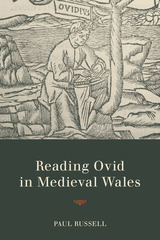
Russell argues that this annotated version of the Ars amatoria arose out of the teaching traditions of the Carolingian world and that the annotation, as we have it, was the product of a cumulative process of glossing and commenting on the text. He then surveys other glossed Ovid manuscripts to demonstrate how that accumulation was built up. Russell also explores the fascinating issue of why Ovid’s love poetry should be used to teach Latin verse in monastic contexts. Finally, he discusses the connection between this manuscript and the numerous references to Ovid in later Welsh poetry, suggesting that the Ovidian references should perhaps be taken to refer to love poetry more generically.
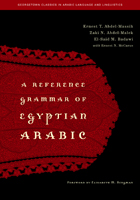
Originally published in 1979, this classic reference work presents definitions of grammatical and linguistic terms for spoken Egyptian Arabic in dictionary form from "active participles" through "writing system." Entries feature definitions and examples of all the grammatical features including phonology, morphology, and syntax. Aimed at the intermediate to advanced student of Egyptian Arabic, this volume presupposes a basic knowledge of Egyptian Arabic. Arabic lexical items are presented in romanized transliteration and are therefore accessible to those who are not familiar with Arabic script.
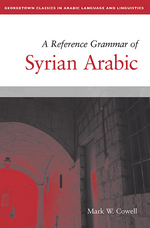
This important reissue, enhanced with free downloadable MP3 files to supplement the first chapter of the text (sounds), is another addition to Georgetown's world-renowned Arabic language-learning materials and is considered to be one of the most outstanding descriptions of any Arabic dialect written for the English-speaking world. It is comprehensive in its coverage—ranging from phonology (how sounds are organized and used) to morphology (sound, syllable, and word structure), with an analysis that is insightful and original. It contains hints on how to master nuances in dialectical pronunciation, as well as the differences of meaning in their various forms.
Based on the dialect of Damascus, the language covered here is part of what has variously been called "Syrian Arabic," "Eastern Arabic," and "Levantine Arabic," encompassing the dialects of Beirut, Amman, and Jerusalem—as well as Damascus—with references made to regional variants. In a world drawn ever closer to events in the Middle East, this comprehensive grammar reference is yet another extraordinary addition to the growing library of Arabic language-learning materials published by Georgetown University Press.
Accompanying MP3 files are available for download from the book’s webpage at press.georgetown.edu.
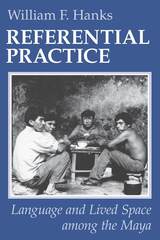
As his central case, Hanks undertakes a comprehensive analysis of deixis—linguistic forms that fix reference in context, such as English I, you, this, that, here, and there. He shows that Maya deixis is a basic cultural construct linking language with body space, domestic space, agricultural and ritual practices, and other fields of social activity. Using this as a guide to ethnographic description, he discovers striking regularities in person reference and modes of participation, the role of perception in reference, and varieties of spatial orientation, including locative deixis. Traditionally considered a marginal area in linguistics and virtually untouched in the ethnographic literature, the study of referential deixis becomes in Hanks's treatment an innovative and revealing methodology.
Referential Practice is the first full-length study of actual deictic use in a non-Western language, the first in-depth study of speech practice in Yucatec Maya culture, and the first detailed account of the relation between routine conversation, embodiment, and ritual discourse.
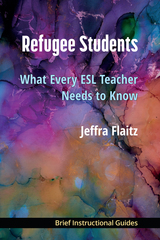
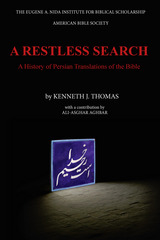
A literary detective story, a historical survey, and an important contribution to translation studies
This book from Kenneth J. Thomas is both a philological and linguistic analysis of Persian translations and a call for interfaith cooperation. Thomas appraises biblical translation efforts from the fifth to the twenty-first centuries of Persian history when successive translators and groups of translators, sometimes of different faiths, worked to reshape and refine versions of the Bible in the supple Persian language of their times. Restless, impelled, and wide-ranging, this is a story of translations commissioned by shahs, undertaken by Christian and Jewish communities, and produced by teams working outside the country.
Features
- Demonstration of the effects of the lack of a standard Persian vocabulary for key biblical terms on literary style and word choice
- Technical analyses and overviews of Persian biblical translations
- A careful examination of sixteen centuries' worth of Bible translations
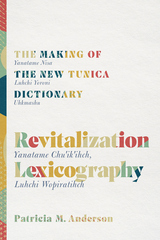
Revitalization Lexicography provides a detailed account of creating a dictionary meant to move a once-sleeping language into a language of active daily use. This unique look under the hood of lexicography in a small community highlights the ways in which the dictionary was intentionally leveraged to shape the Tunica language as it inevitably changes throughout revitalization. Tunica, one of the heritage languages of the Tunica-Biloxi Tribe of Marksville, Louisiana, has been undergoing active revitalization since 2010. The current generation of speakers began learning Tunica, a once-sleeping language, through written documentation. Now enough Tunica speakers to confer amongst themselves when questionable language use arises.
Marrying both the theoretical and the practical aspects that contributed to the Tunica dictionary, this book discusses complex lexicographic tasks in a manner accessible to both academic and community readers. This work is firmly backdropped in a fieldwork approach that centers the community as owners of all aspects of their revitalization project. This book provides concrete and practical considerations for anyone attempting to create a dictionary. Contrasting examples from Tunica and English dictionaries, this book challenges readers to rethink their relationship to dictionaries in general. A must-read for anyone who has ever touched a dictionary.

E-Textbooks are now available to purchase or rent through VitalSource.com! Please visit VitalSource for more information on pricing and availability.
As of January 1, 2021, Smart Sparrow Companion Websites are no longer available for any of our textbook programs. New companion websites are coming soon, and will be hosted by Lingco. When it becomes available, instructors may sample the new companion websites by visiting GUPTextbooks.com/companionwebsites. The full websites will be available for fall 2021 course adoption.
Until the new companion websites become available, eBook Workbooks with exercises from the Smart Sparrow Electronic Workbook are available for purchase on the GUP website and VitalSource.com, as are Workbook Answer Keys. They will both be sold in eBook format only.
Rodnaya rech', an introductory textbook for heritage learners, addresses the unique needs of students who have at least intermediate-level listening and speaking skills on the ACTFL scale but who have underdeveloped or nonexistent literacy skills. With an emphasis on conceptual understanding of vocabulary and grammar, Rodnaya rech' builds students' literacy skills and teaches them to strategically use the linguistic intuition they have gained as heritage speakers while strengthening all four skill areas.
Essential to learning with Rodnaya rech’ is the workbook, which includes all of the homework activities and texts for reading comprehension (sold separately). These practice activities allow students to practice what they are learning in the textbook.
With this textbook designed for in-class work and the accompanying workbook, Rodnaya rech' can be used as the main course material either in an intensive one-semester class or at a more measured pace over two semesters. This book is flexible enough to be used in specialized heritage or in mixed classes. It can also support independent study and learning in less formal settings, such as community schools.
For Teachers:
Exam copies of the textbook are available free of charge to instructors and can be ordered on this page. To request a print sample, please use the "print" exam copy button. To request a digital sample, instructors should log onto VitalSource.com, select "Faculty Sampling" in the upper right-hand corner, and select the desired products.

Rodnaya rech' with website, an introductory textbook for heritage learners, addresses the unique needs of students who have at least intermediate-level listening and speaking skills on the ACTFL scale but who have underdeveloped or nonexistent literacy skills. With an emphasis on conceptual understanding of vocabulary and grammar, Rodnaya rech' builds students' literacy skills and teaches them to strategically use the linguistic intuition they have gained as heritage speakers while strengthening all four skill areas. The accompanying companion website–included with the book–offers fully integrated exercises to use alongside the text.
Rodnaya rech' can be used as the main course material either in an intensive one-semester class or at a more measured pace over two semesters. This book is flexible enough to be used in specialized heritage or in mixed classes. It can also support independent study and learning in less formal settings, such as community schools.
For Instructors: Separate print Teacher’s Editions of Rodnaya rech’ are no longer available. Instead, instructors should submit exam and desk copy requests using ISBN 978-1-64712-219-5.
READERS
Browse our collection.
PUBLISHERS
See BiblioVault's publisher services.
STUDENT SERVICES
Files for college accessibility offices.
UChicago Accessibility Resources
home | accessibility | search | about | contact us
BiblioVault ® 2001 - 2024
The University of Chicago Press









